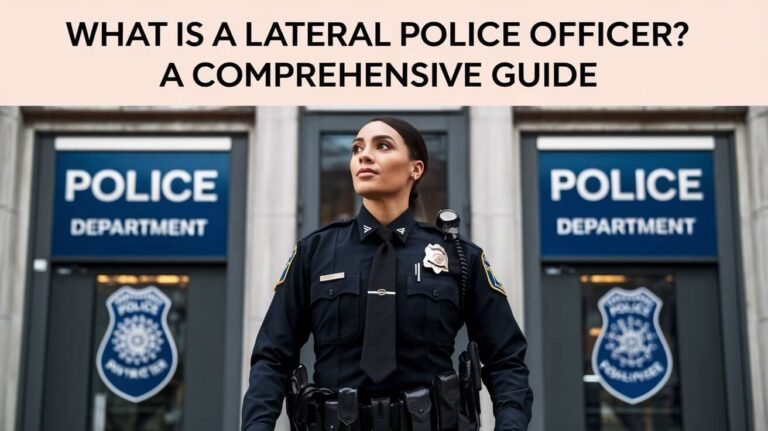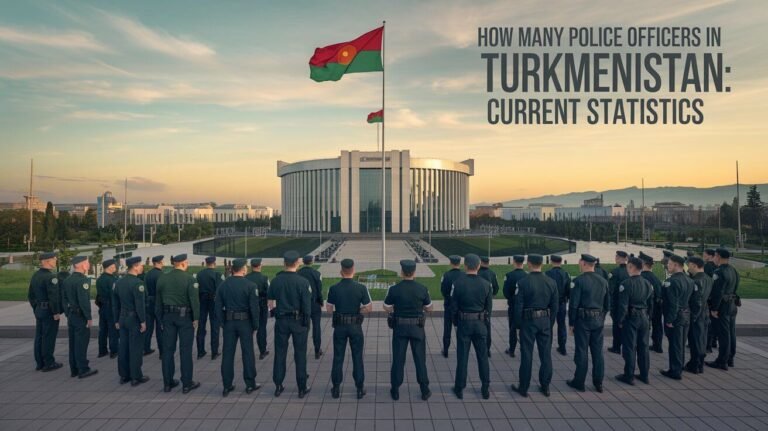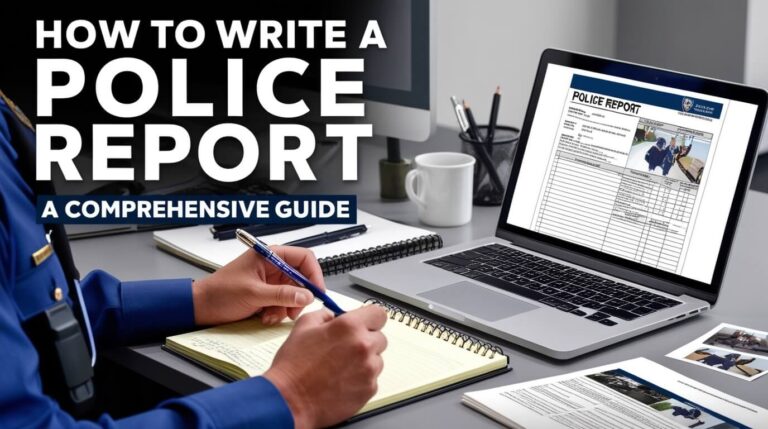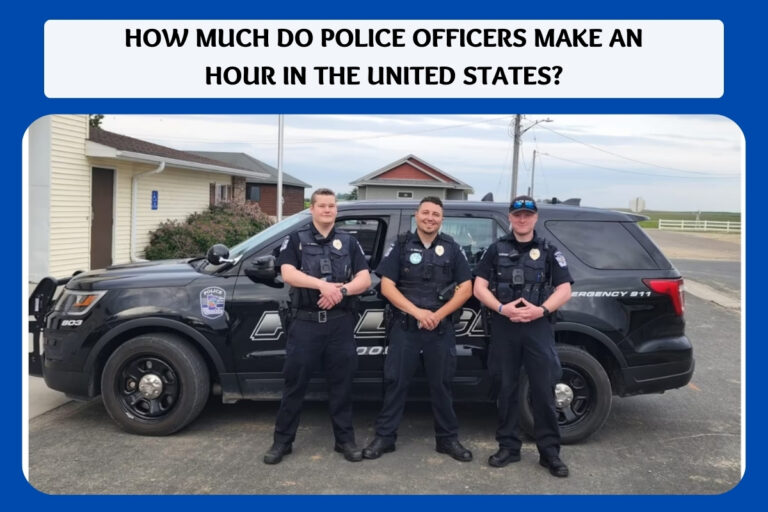What Is the Police Activity Near Me Right Now?

Ever wondered about the sirens in your neighborhood or the flashing lights down the street? Police activity near you right now could range from routine patrols to emergency responses, and knowing what’s happening can help you stay informed and safe. In this post, we’ll explore how to track local police activity, understand what it means, and use this information responsibly.
Real-Time Police Activity Information
Sources of Current Police Activity Data
Police departments across the United States are embracing transparency by sharing real-time data about their activities. Many cities now offer online platforms where you can see what’s happening in your area.
For example, the Seattle Police Department provides two types of data maps:
- Calls for Service Map: Shows police responses from the last 24 hours
- Crime Data Map: Displays finalized crime reports from the past week
These tools give you a snapshot of recent police activity near you. But they’re just the tip of the iceberg when it comes to staying informed about local law enforcement efforts.
Benefits of Knowing About Nearby Police Incidents
Staying up-to-date on police activity in your area has several advantages:
- Safety awareness: You can avoid potentially dangerous areas
- Traffic management: Knowing about accidents helps you plan better routes
- Community involvement: Understanding local issues can inspire you to get involved
- Peace of mind: Sometimes, knowing what’s happening is better than wondering
Limitations and Privacy Considerations
While access to this information is valuable, it’s important to remember that not all police activity is public. Sensitive investigations or situations involving minors are often kept confidential. Also, the data you see might be delayed or incomplete to protect ongoing operations.
Tools to Track Police Activity in Your Area
Official Police Department Websites and Apps
Many police departments now have their own websites or mobile apps that show active calls and recent incidents. These official sources are usually the most reliable for current information.
The Chesterfield Police Department, for instance, provides an “Active Police Calls” page on their website. It shows:
- Call ID
- Location
- Time received
- Call type
- Status
- Priority
- Police beat
This level of detail gives you a clear picture of what’s happening right now in your community.
Third-Party Crime Mapping Services
Several companies offer crime mapping services that aggregate data from multiple sources. These can be especially useful if you want to see patterns over time or compare different areas.
Popular options include:
- CrimeMapping.com
- SpotCrime
- Neighborhood Scout
These services often provide more user-friendly interfaces and additional features like crime alerts.
Social Media and Community Platforms
Don’t underestimate the power of social media for real-time updates. Many police departments maintain active Twitter or Facebook accounts where they post about ongoing incidents.
Community platforms like Nextdoor or local Facebook groups can also be valuable sources of information, though it’s important to verify what you read from these unofficial channels.
Local News Outlets and Police Scanners
For those who want to dive deeper, local news websites often have crime sections with recent reports. Some enthusiasts even use police scanner apps to listen in on radio communications, though this requires some knowledge to interpret correctly.
Types of Police Activities You Might Encounter
Emergency Responses (911 Calls)
The most urgent police activities are responses to 911 calls. These can include:
- Violent crimes in progress
- Medical emergencies
- Fire alarms
- Domestic disturbances
When you see multiple units responding quickly to a location, it’s likely a high-priority emergency call.
Traffic Stops and Accidents
A large portion of visible police activity involves traffic:
- Routine traffic stops
- Accident investigations
- DUI checkpoints
- Speed traps
These activities help maintain road safety but can also cause temporary disruptions.
Ongoing Investigations and Patrols
Not all police activity is fast-paced or dramatic. Officers spend a lot of time on:
- Neighborhood patrols
- Follow-up investigations
- Serving warrants
- Community policing efforts
These activities might not make the news, but they’re crucial for maintaining public safety.
Community Outreach and Non-Emergency Services
Police departments also engage in various community services:
- School resource officers
- Neighborhood watch meetings
- Crime prevention programs
- Assisting with lost pets or property
These activities build positive relationships between law enforcement and the community.
Interpreting Police Activity Information
Understanding Police Codes and Terminology
When you’re looking at police activity data, you might see codes or abbreviations that seem like a foreign language. Here’s a quick guide to some common terms:
- 10-4: Message received
- 187: Homicide (in California)
- 415: Disturbance
- 487: Grand theft
- 5150: Mental health hold
Remember, codes can vary by department, so check your local police website for specific meanings.
Recognizing Different Priority Levels
Most police departments use a priority system for calls. Generally:
- Priority 1: Immediate response needed (life-threatening situations)
- Priority 2: Urgent but not life-threatening
- Priority 3: Non-emergency requiring officer response
- Priority 4: Report-taking or low-priority calls
Understanding these levels helps you gauge the seriousness of nearby police activity.
Analyzing Patterns in Local Police Activity
Looking at police activity over time can reveal interesting patterns:
- Time of day: Are certain types of calls more common in the morning or at night?
- Day of week: Do weekends see more activity than weekdays?
- Seasonal changes: Do some crimes increase during summer or around holidays?
Recognizing these patterns can help you make informed decisions about your daily routines and safety precautions.
How to Respond to Nearby Police Activity
Safety Precautions During Active Incidents
If you notice police activity near you:
- Stay calm and assess the situation
- Follow any instructions given by law enforcement
- Avoid the area if possible
- Keep doors locked and stay inside if advised
Your safety should always be the top priority.
When and How to Report Information to the Police
If you have information about a crime or suspicious activity:
- For emergencies, always call 911
- For non-emergencies, use the department’s non-emergency number
- Many departments now offer online reporting for minor incidents
Provide clear, concise information and be prepared to answer follow-up questions.
Avoiding Interference with Police Operations
While it’s natural to be curious about nearby police activity, it’s crucial not to interfere:
- Keep a safe distance from active scenes
- Don’t spread unverified information on social media
- Comply with any police instructions or road closures
Remember, interfering with police work can be dangerous and, in some cases, illegal.
The Impact of Real-Time Police Activity Data on Communities
Increased Public Awareness and Safety
Access to real-time police activity information can lead to:
- Better-informed citizens
- Increased community vigilance
- More effective neighborhood watch programs
- Improved emergency preparedness
When people know what’s happening around them, they can make safer choices.
Challenges in Data Accuracy and Interpretation
However, this wealth of information isn’t without its challenges:
- Initial reports may be inaccurate
- Data can be misinterpreted without context
- Over-reporting of minor incidents can increase fear
- Privacy concerns for individuals involved in incidents
It’s important to approach police activity data with a critical eye and seek additional context when needed.
Effects on Community-Police Relations
Transparency in police activities can have mixed effects on community relations:
- Positive: Increased trust and understanding of police work
- Negative: Potential for increased scrutiny and criticism
The effect comes from how police and people in the community use and understand the information they have.
Future Trends in Tracking Local Police Activity
Advancements in Data Visualization and AI
The future of tracking police activity looks promising:
- Interactive 3D maps showing real-time incident locations
- AI-powered prediction of crime hotspots
- Virtual reality simulations for public education
These technologies could make it easier than ever to understand what’s happening in your neighborhood.
Integration with Smart City Technologies
As cities become “smarter,” police activity tracking might integrate with:
- Traffic management systems
- Public transportation networks
- Emergency response coordination
This integration could lead to faster response times and more efficient policing.
Potential Changes in Privacy and Data Sharing Policies
With great data comes great responsibility. Future trends might include:
- Stricter regulations on what information can be shared publicly
- Enhanced anonymization techniques to protect individual privacy
- More granular control for citizens over their data in police reports
Balancing transparency with privacy will be an ongoing challenge.
Frequently Asked Questions About Local Police Activity
How Often Is Police Activity Data Updated?
Update frequency varies by department and platform. Some examples:
- Real-time: Many CAD (Computer Aided Dispatch) systems update constantly
- Daily: Crime reports often update once per day
- Weekly: Some crime maps refresh data on a weekly basis
Check your local police department’s website for specific update schedules.
Can I Get Notified About Police Activity in My Neighborhood?
Yes, many services offer alerts:
- Text or email notifications from police department apps
- Push notifications from crime mapping services
- Alerts from community apps like Nextdoor
Set up notifications for the areas most relevant to you, but be mindful of alert fatigue.
Are All Police Activities Publicly Reported?
No, not all police activities are made public. Reasons for withholding information include:
- Ongoing investigations
- Juvenile cases
- Certain victim crimes
- Undercover operations
Police departments balance transparency with operational security and privacy concerns.
How Can I Distinguish Between Routine and Serious Police Activity?
Several factors can help you assess the seriousness of police activity:
- Number of units responding
- Use of sirens and lights
- Duration of the incident
- Official statements from the police department
When in doubt, check official sources or local news for more information.
Conclusion
Staying informed about police activity near you right now is easier than ever, thanks to modern technology and increased transparency from law enforcement agencies. By using the tools and knowledge we’ve discussed, you can better understand what’s happening in your community and make informed decisions about your safety.
Remember, while it’s valuable to stay informed, it’s equally important to use this information responsibly. Avoid interfering with police work, respect privacy concerns, and always prioritize your safety and the safety of others.
Whether you’re checking an official police website, using a crime mapping app, or simply staying alert to your surroundings, knowledge about local police activity can be a powerful tool for community awareness and personal safety. Stay informed, stay safe, and be an active, responsible member of your community.






